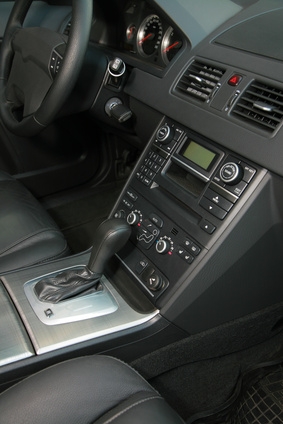
Buying a car can be an investment--although a depreciating one--while leasing a car means you'll more or less always be driving the latest model. Depending on your needs and desires, there are pros and cons to both buying and leasing. The two methods of putting yourself in a new car are markedly different in terms of money, day-to-day usage and end results.
In purchasing a car, you have to either pay cash in full or finance the car. The vast majority of buyers opt to finance, which means they must come up with a down payment, total sales tax, registration and other miscellaneous fees to drive off the lot. Up-front fees on leased vehicles vary, but typically include the first month's payment, registration and other fees, a refundable security deposit, an optional down payment and partial or full usage taxes. Buyers with high credit scores can drive away in a leased vehicle without paying as much up front; either way, leased cars cost less out the door than purchased cars, according to AutoLeasingSpecialist.com.
Monthly lease payments are almost always less expensive than payments for purchased cars. This is because car payments for a purchased car include the entire cost of the vehicle spread over the course of the loan. Leased car payments are based on the depreciation of the car over the duration of the lease. Both types of monthly payments also include fees, taxes, and interest charges. Another monthly cost consideration is automobile insurance; according to AutoLeasingSpecialist.com, leased cars "require higher limits for insurance coverage, for both public liability and property damage," leading to a higher monthly insurance cost.
Owning a car means you can put as many miles on it as you'd like; the only drawbacks are more wear and tear on the vehicle and a lower future trade-in or resale value. Leased cars, however, always come with maximum allowable mileage per lease term, which usually averages to between 12,000 and 15,000 miles per year, according to ConsumerReports.org. If you tend to drive more than the allowable mileage, you can negotiate more miles into the lease contract, but usually at the cost of a higher monthly payment. Another difference between owning and leasing a car is that the wear and tear on an owned vehicle simply affects your repair bills and your ability to sell it down the line; normal wear and tear on a leased car isn't your problem once your lease ends. That said, excessive wear and tear on a leased vehicle usually incurs extra charges.
When you buy a car, it's yours until you sell it or trade it in, whether you've paid off the loan or not. You can use money from selling it to pay off the loan or use the car itself as a down payment on a new one. You can even drive the car until it's irreparable to get the absolute most out of your investment. Either way, as an investment, the car has some equity, which can go toward the purchase of the next car. On the other hand, a leased vehicle must be turned in to the dealership at the end of the contract. If the car is in acceptable condition, the dealership will return the security deposit and the lessee will pay some end-of-lease fees. To leave the lot, the lessee has to lease again, buy or get a ride.